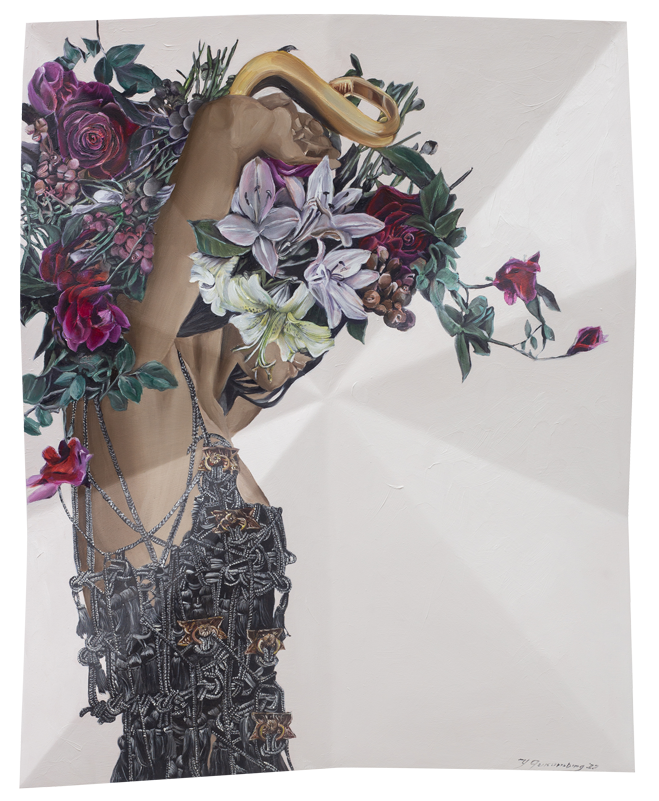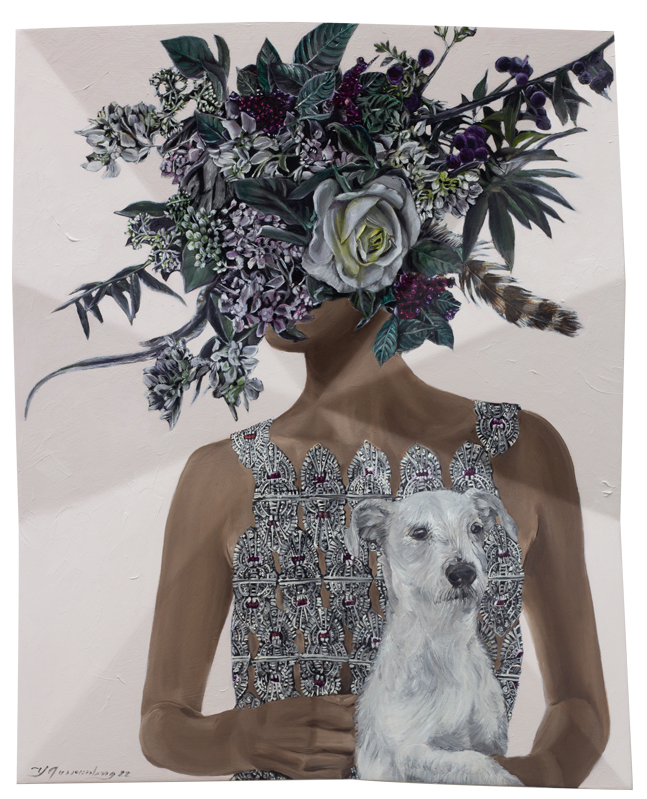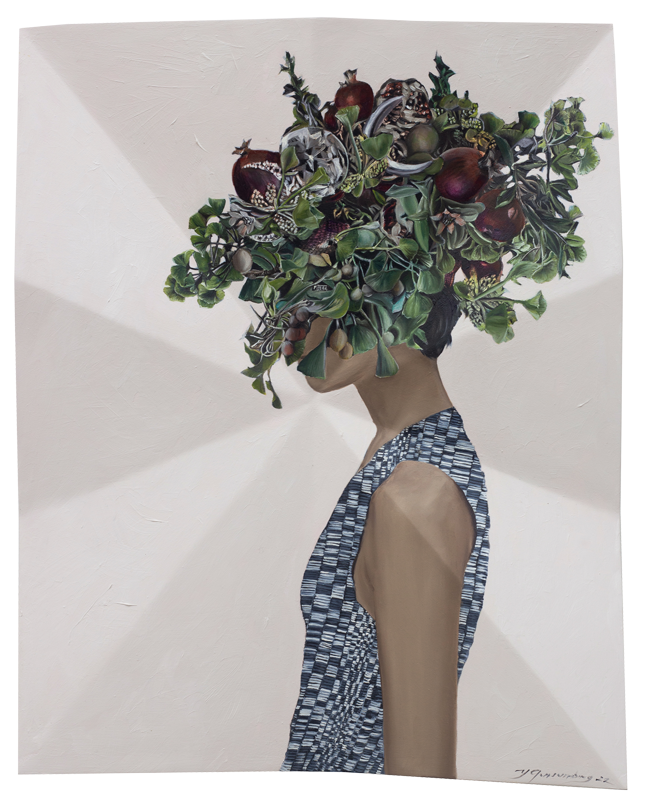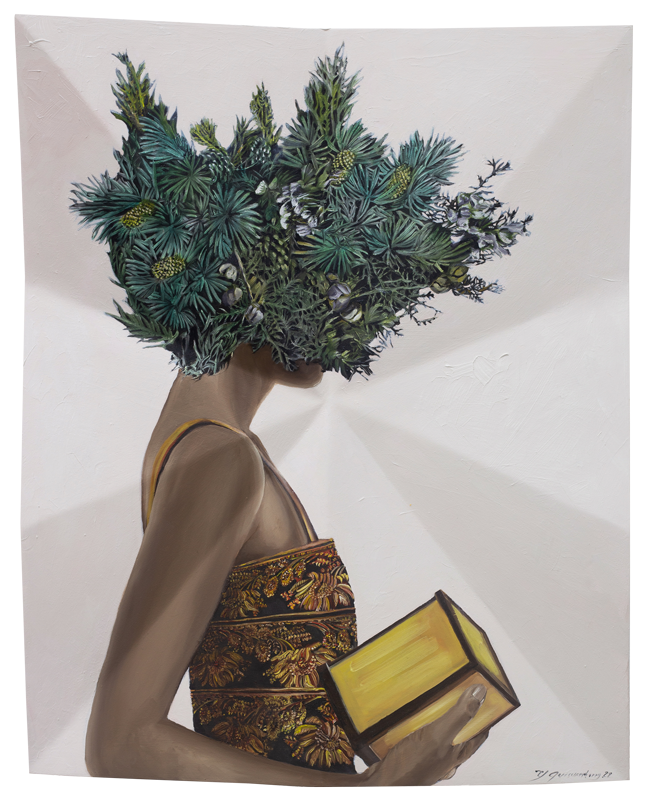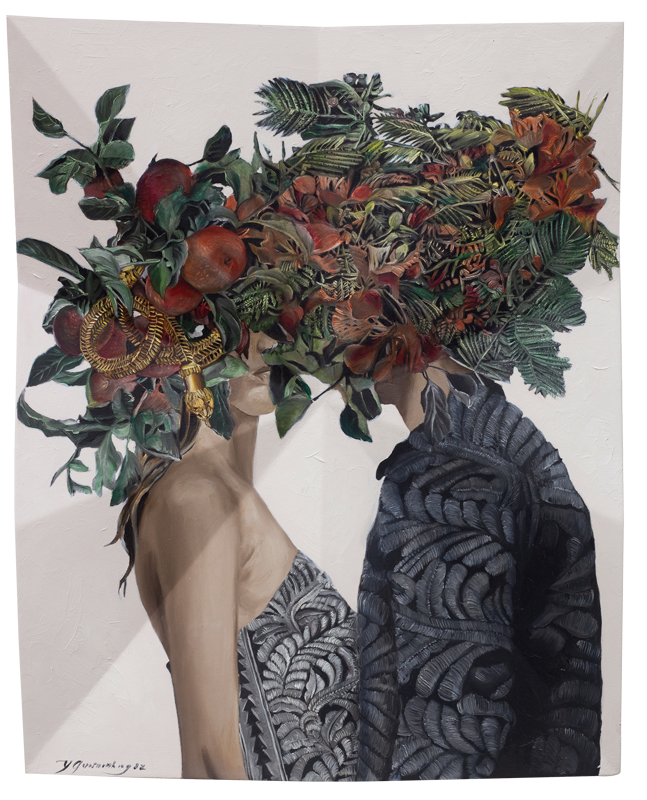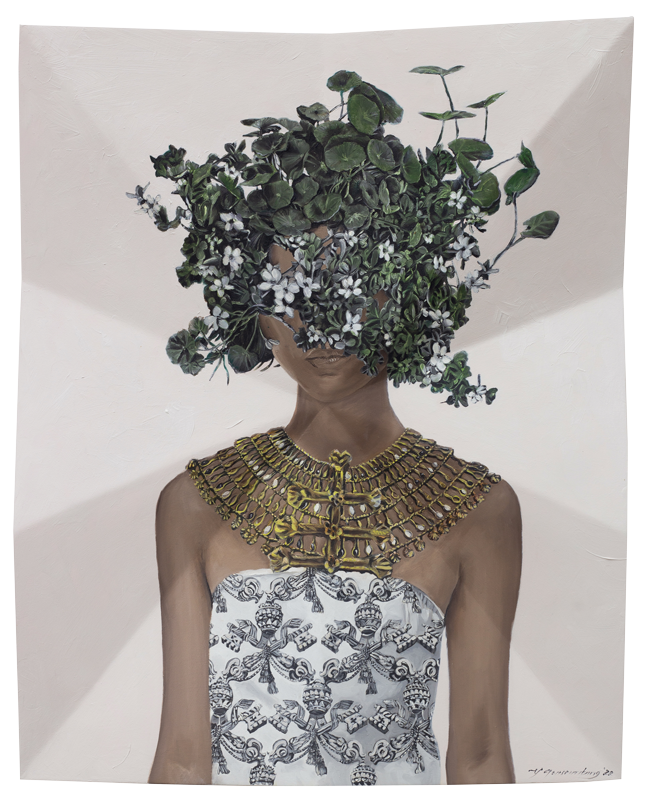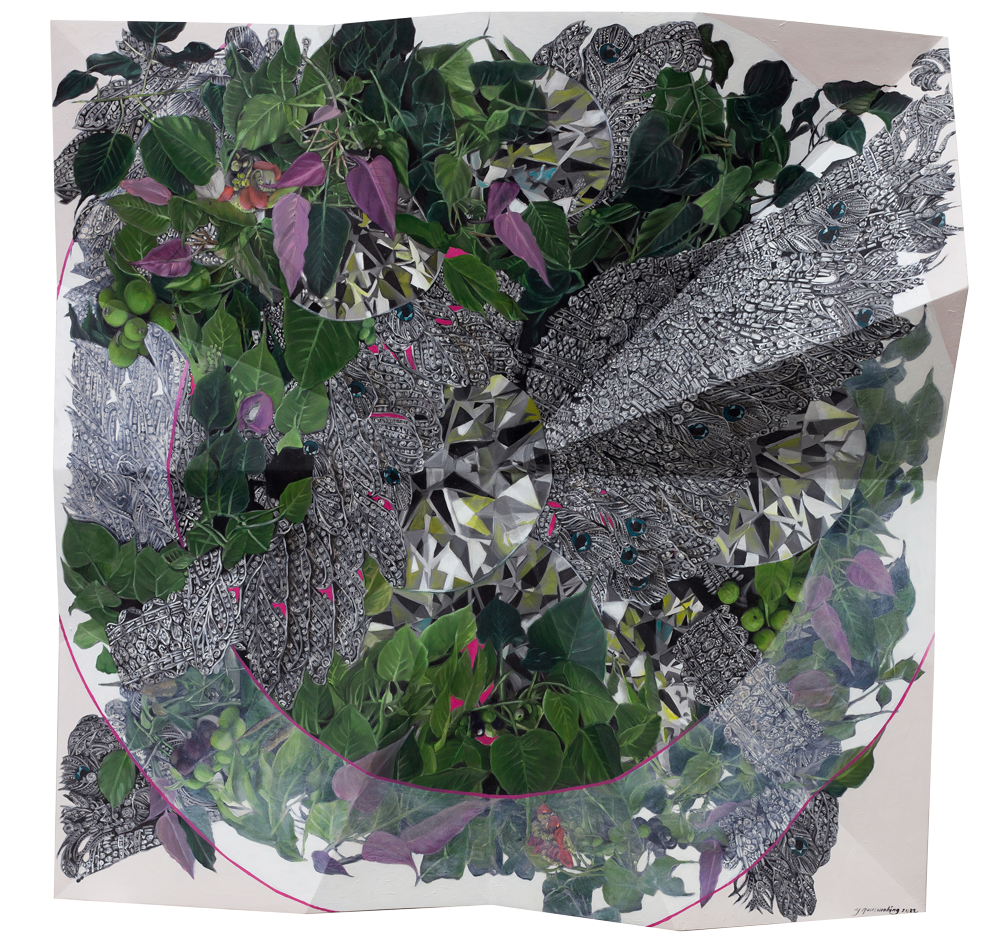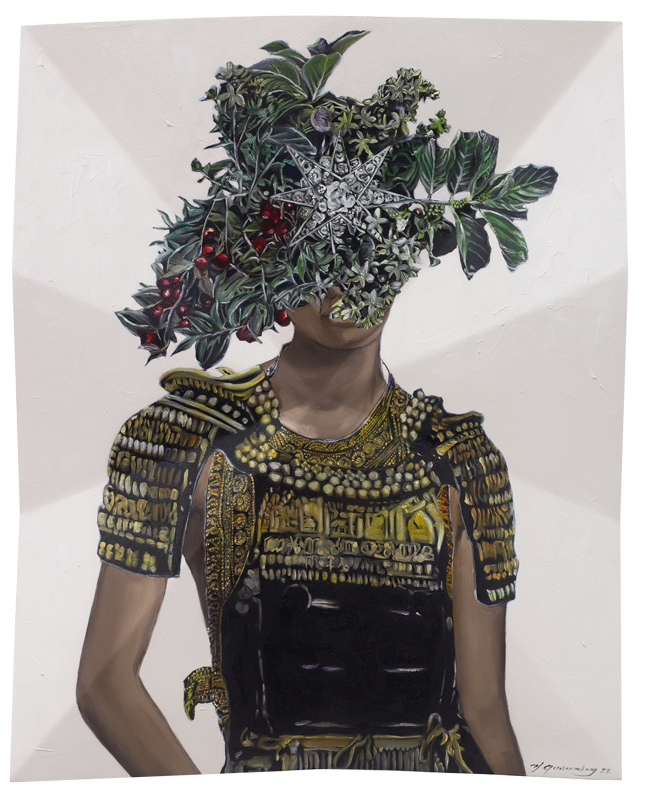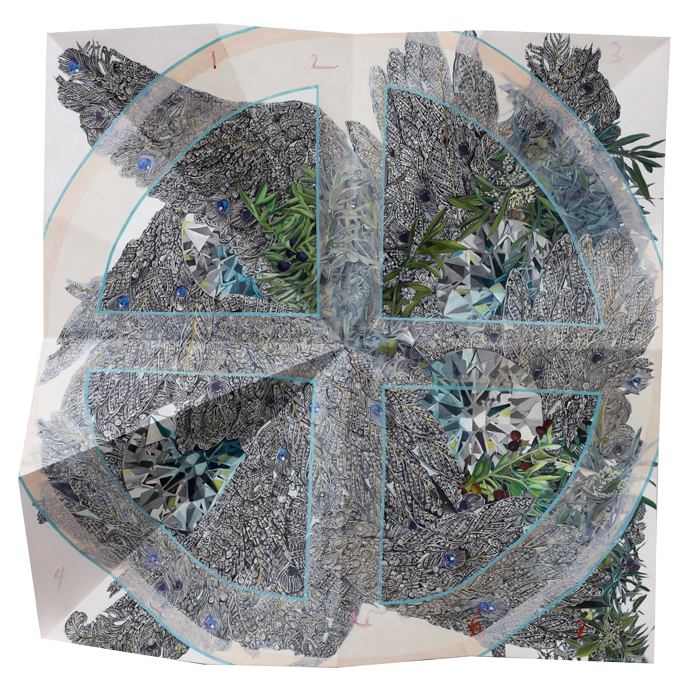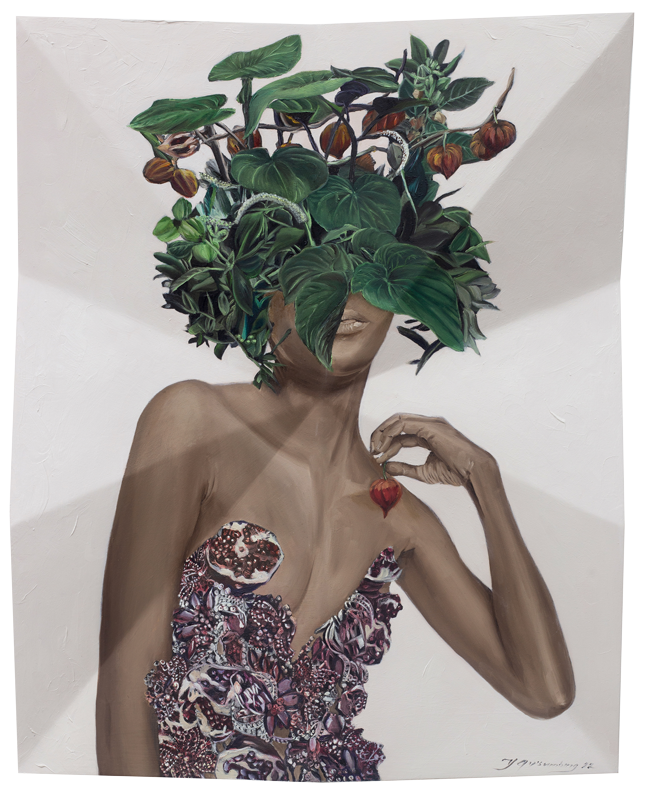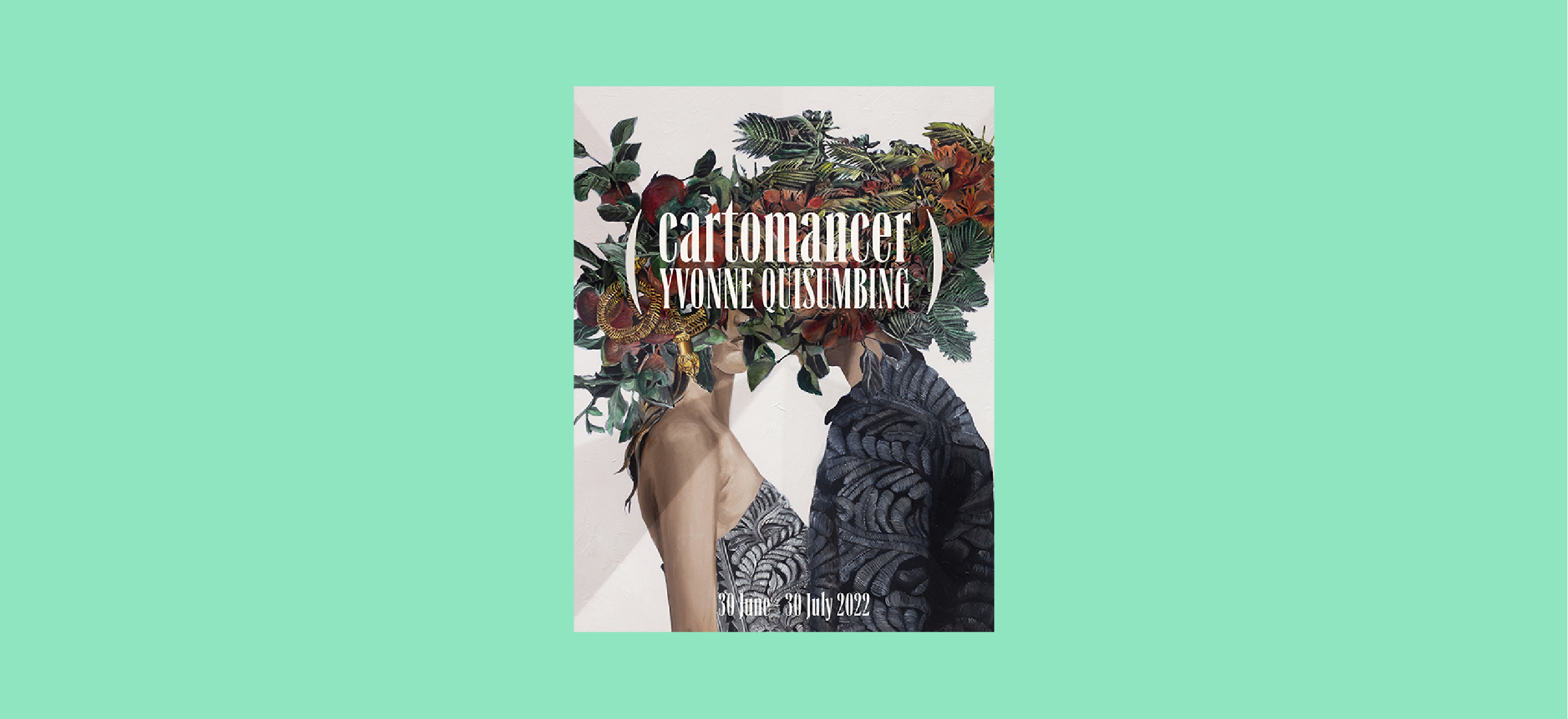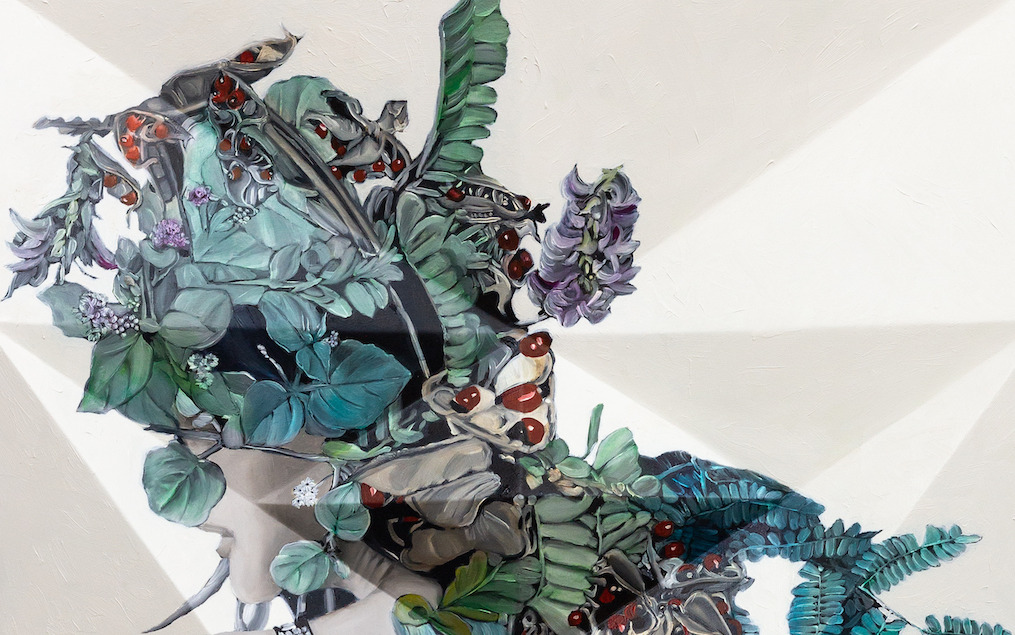
About
We first encounter the Fool (Arcanum 0). Clothed in ovoid patterns reminiscent of the number zero, the Fool represents new beginnings. Reversed, the Fool symbolizes failure to act because of fear. As remedy, on top of her head is placed a bouquet of medicinal plants to ward off anxiety—Psychotria viridis, Banisteriopsis caapi, and Elaeocarpus ganitrus. Cartomancer follows a storyline from the innocent Fool towards the wisdom of the World. The narrative is told in ten oil on sculptural substrates, each representing ten out of the several archetypes found in the Tarot deck.
The ten archetypes, clothed in Quisumbing’s symbolic fashion designs, bring both power and threat. The two facets of each archetype refer to the Jungian concept of enantiodromia or the tendency of things to become their opposite when pushed to the threshold. For each equilibrium in danger, Quisumbing prescribes stabilizing ayurvedic and traditional healing plants. Like the Fool, the other featured archetypes are presented in the same systematic array of meticulous details. Fashion embodies either facet of the archetype and flora represents the antidote
The Magus (Arcanum I) is clothed with a design of knots representing wholeness and willpower. Her lethargy has been cured with Ephedra sinica, Rose and Lily. The Baylan (Arcanum II) wears Binakol, a Northern Luzon weave believed to distract the evil spirits with its geometric pattern that represents the waves of the mysterious and unruly sea. To quell emotional balance, she is given Pomegranate and Ginkgo biloba. The Great Mother (Arcanum III) wears a bodice of ruby gems that embody passion. Her proclivity for rage is dissipated by a combination of Pomegranate, Piper methysticum and Withania somnifera. The Pope’s (Arcanum V) orthodoxy is shown through the crossed key and papal ferula design, her tendency for blind obedience restored by the mental clarity given by Bacopa monnieri and Centella asiatica. The Man and Woman’s (Arcanum VI) decaying passion is healed by the antibacterial and antioxidant properties of the Malus domestica and Delonix regia. Armored Auriga’s (Arcanum VII) turbulence is reigned in through the focus provided by Morinda citrifolia, Ziziphus Jujuba, and Hypercum perforatum. The Monk (Arcanum IX), holding a lantern to light the way, is now ready to face other people, her fears dissipated by the sedative effects of Cedrus atlantica and Cupressus sempervirens.
Quisumbing lays down this powerful deck of designs that grounds the art of fortune-telling to folk healing. Frowned upon by conservatives, cartomancy is deemed as an unproductive past time while traditional medicine is pushed to the outskirts by big pharmaceutical companies. Her choice to use these two modes of alleged heresy—occult divination and traditional medicine—reveals a retreat from the “homogenous, empty time” of modern society. The penultimate part of the chronicle guides us into this understanding. The Wheel of Fortune, adorned in Olea europaea and Laurus nobilis, represents enlightenment that cannot be found within the tedium of our times. One needs to walk away from the turning wheel in order to see its entirety. As in her choice of presenting her images on sculptural substrates, the undulating and uneven folds will only yield the wholeness of the image from a strategic distance. Quisumbing prominently and defiantly weaves these two heresies to concoct a potent remedy for our era of speed and strife. Accordingly, it is in both the attention to details and an unfamiliar vantage point, such as ostracized heresies and blasphemies, that one is enabled to see life from a fresh perspective.
At the very end of the story is the World Arcanum, embellished with Ficus religiosa. The Fool and The World are the polar opposite archetypes in the Arcanum deck. Both symbolize the two facets of emptiness—innocence on one end and freedom grounded on wisdom at the other end. The tale ends where it starts. Cartomancer is the third in the APOTHECARY series inspired by Dr. Eduardo Quisumbing's Medicinal Plants of the Philippines (1951,1978), an acclaimed catalogue of common Philippine flora with healing properties published to alleviate the suffering of Filipinos during post-war Philippines. In a bid to likewise glean through recent national and global tragedies, Cartomancer sets its unflinching gaze at our uncertainties amidst accelerating flux. Gently augmenting a sustained dialogue that reveals the unfolding spiritual and creative journey of an artist into the scientific and nationalist mind of her forebear, Quisumbing lays down an account that calls for a slowing down and delving deep into the knowledge of the self to counter the anxieties of a nation.
— Adjani Arumpac
Yvonne Quisumbing (b. 1975) is an artist based in Cebu. She studied Interior Design in PSID and Ab Fashion Design in the College of St. Benilde. She worked as a designer and pattern-maker for 20 years and received awards in fashion locally and internationally. Her first solo art show in 2005 was a fusion of fashion, paintings, sculptures and film. In 2020, she earned her master's degree in fine arts, summa cum laude, from UST.
Installation Views
Works
